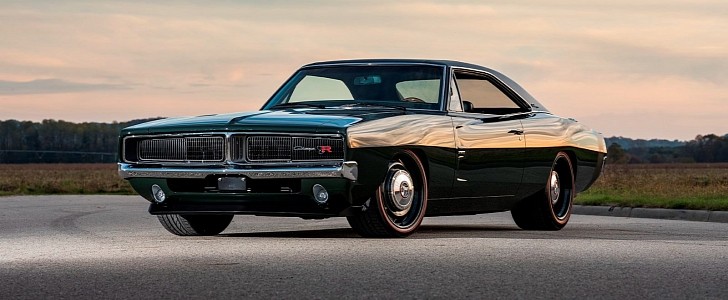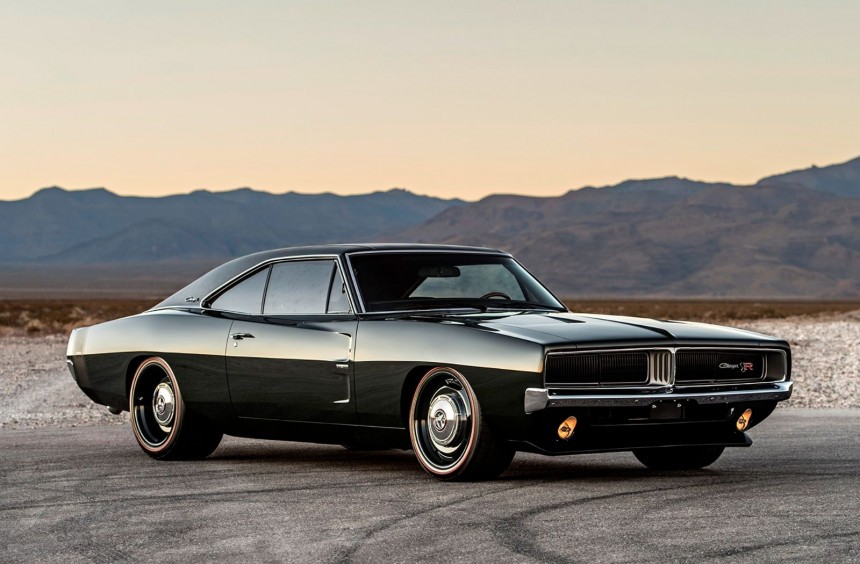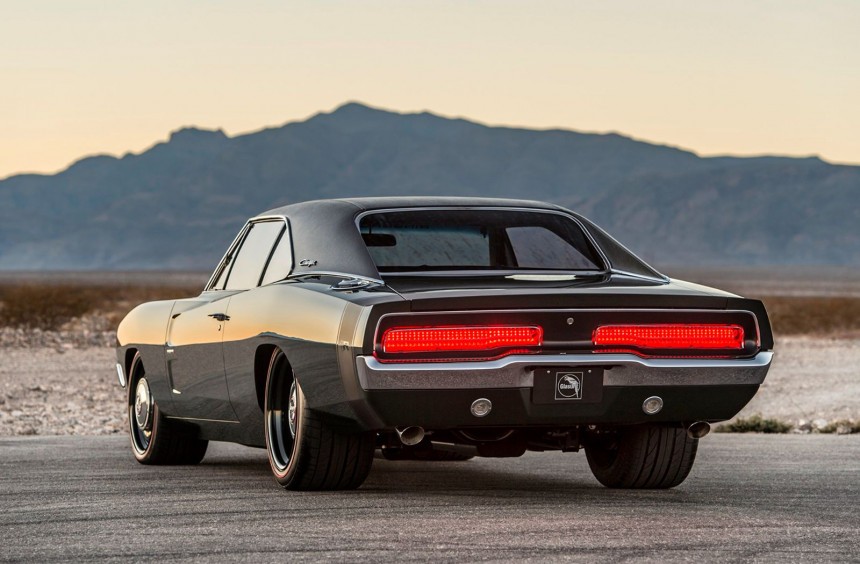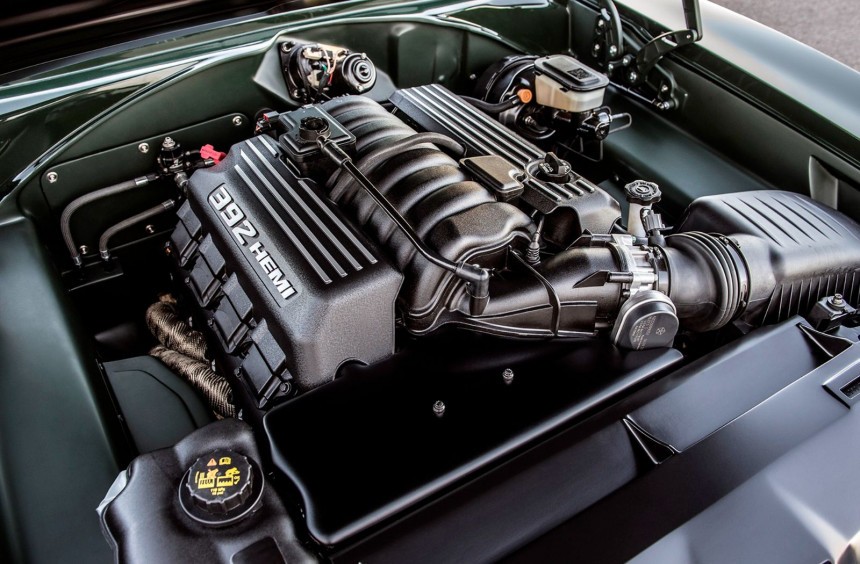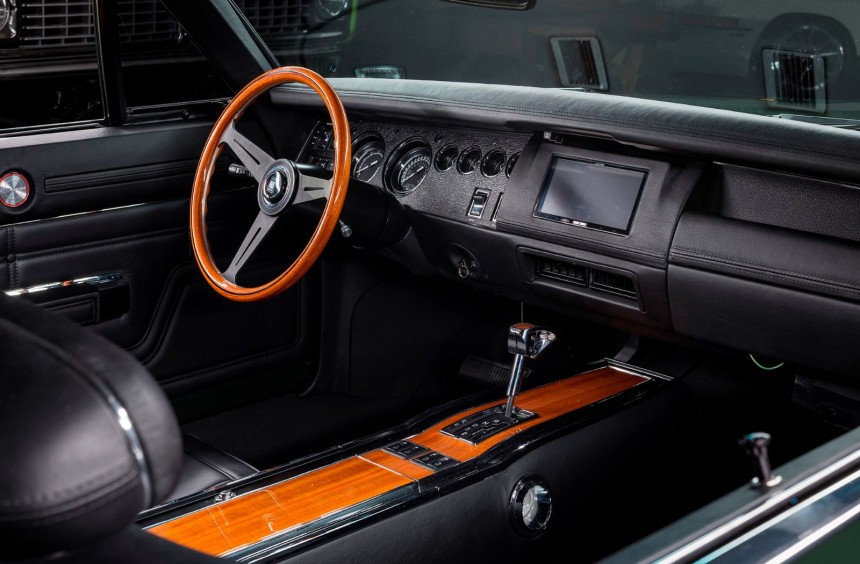The second-generation Dodge Charger is among the most popular muscle cars ever built. During the last two decades, many custom builders have attempted to modernize it, but few managed to do it in such a subtle and flawless manner as brothers Jim and Mike Ring have done with the build they called Defector.
Chrysler introduced the now-legendary nameplate in 1966 with the release of a two-door fastback that shared its platform and many components with the fifth-generation Dodge Coronet.
Two years later, the model received an extensive redesign, which resulted in one of the most iconic muscle cars of all time. Produced for only two years and available in a performance-oriented configuration called the R/T, it became the dream ride for many Baby Boomers, as well as the generations that followed.
Although the 1968-1970 Charger was never officially sold in Europe, many of them made their way across the Atlantic throughout the years. Some ended up on the Scandinavian Peninsula, a place where many think only moose or Volovs roam the roads.
The region is in fact home to a big community of American muscle car enthusiasts, one of them being Erlend Christoffersen, a Norwegian who grew up dreaming about owning one.
As an adult, he fulfilled his dream after moving to California where he brought a 1969 Charger off eBay and drove it all over the country. While the original design appealed to him, the way it handled never did, so he eventually sold it.
Years later, after he moved from the U.S. to England, the Norwegian decided to buy another Charger but this time, he wanted to transform it into a modern machine and chose the Wisconsin-based Ringbrothers to build it. Even though they never worked on a Mopar before, focusing much of their efforts on outrageous Mustangs, Jim and Mike, the brothers behind the renowned shop, accepted the colossal challenge.
Their client had a clear vision and was very specific about what he wanted; a Charger that would retain the original look as much as possible yet handle like a modern grand tourer and feature all the creature comforts needed for lengthy road trips across Europe.
With the help of freelance designer Gary Ragle, the Rings presented Christoffersen with several renderings and after receiving his blessing, they got to work.
The original subframe was replaced with a Detroit Speed hydroformed version with rack-and-pinion steering originally conceived for second-gen Camaro builds. This platform had been used on previous projects and it was guaranteed to provide the maneuverability requested by the owner, especially since they equipped it with a RideTech adjustable coil-over kit.
For the rear, the Wisconsin builders went with a QUADRAlink suspension setup that was also sourced from Detroit Speed and modified to attain a wider stance.
Under the hood of this modernized beast resides a Gen III 392 ci (6.4-liter) HEMI boosted to 536 hp by Wegner Motorsports. Compared to the standard 485-hp unit, the Defector’s engine came with several aftermarket enhancements such as a beefier camshaft, custom Flowmaster headers, and a Holley Dominator fuel management system.
In a bold move that can be considered blasphemous by some, the brothers didn’t link it to a Chrysler transmission, opting for a Bowler Tru-Street automatic, which is a modified General Motors 4L80E gearbox. It helped send up to 516 lb-ft (702 Nm) of torque to the rear wheels through a QA1 carbon fiber driveshaft and a Ford 9-inch (22.8 cm) differential custom built by John's Industries.
All that power required a capable braking system, so the Charger got a set of Baer 6S six-piston monobloc calipers that hugged multi-piece vented, cross-drilled, and slotted rotors. They were tucked away behind a set of HRE aluminum alloy wheels developed specifically for this build with bespoke hub caps manufactured by the Rings. Measuring 19 inches in diameter, 11 inches (28 cm) wide in front, and 13 inches (33 cm) in the rear, the wheels were wrapped in equally wide, red striped Michelin Pilot Super Sport tires.
While the body might look stock - especially to the untrained eye - it was also extensively modified, requiring thousands of hours of hard work. The trunk was shortened by 2 inches (5 cm) and the entire wheelbase was extended by 3 inches (7.6 cm), which required custom fabricated front fenders, side rockers, and quarter panels. Final alterations included chrome work done by Advanced Plating, a new vinyl hardtop, and a beautiful coat of dark green BASF paint called "Greener on the Other Side."
The same can be said about the interior that oozed 1960’s vibes, but according to the brothers, not a single stock part was used. The front seats were sourced from a Toyota Camry and were given a vintage makeover by the experts at Upholstery Unlimited, whereas the rear bench, dash, wood trims. and most of the panels were built from scratch.
Two years of challenging work later, the car was completed and made its way to the SEMA convention in Las Vegas, where it was among the star attractions. Below, you can watch a video from the event posted on Youtube by RoadHeads Media. It features footage of the car as well as an interview with Christoffersen.
The Charger then defected to the UK where it has been driven by its proud owner as often as possible, blowing the minds of Londoners every time it rumbles through the city’s bustling streets.
As a huge fan of this legendary Dodge, I always preferred a stock model over an audacious restomod. That being said, I would choose the Defector over a Concours-level ’69 in a heartbeat. It preserves everything I love about the second-generation Charger, fixes all its shortcomings, and takes it close to the realms of muscle car perfection with subtly integrated modern upgrades.
Two years later, the model received an extensive redesign, which resulted in one of the most iconic muscle cars of all time. Produced for only two years and available in a performance-oriented configuration called the R/T, it became the dream ride for many Baby Boomers, as well as the generations that followed.
Although the 1968-1970 Charger was never officially sold in Europe, many of them made their way across the Atlantic throughout the years. Some ended up on the Scandinavian Peninsula, a place where many think only moose or Volovs roam the roads.
The region is in fact home to a big community of American muscle car enthusiasts, one of them being Erlend Christoffersen, a Norwegian who grew up dreaming about owning one.
Years later, after he moved from the U.S. to England, the Norwegian decided to buy another Charger but this time, he wanted to transform it into a modern machine and chose the Wisconsin-based Ringbrothers to build it. Even though they never worked on a Mopar before, focusing much of their efforts on outrageous Mustangs, Jim and Mike, the brothers behind the renowned shop, accepted the colossal challenge.
Their client had a clear vision and was very specific about what he wanted; a Charger that would retain the original look as much as possible yet handle like a modern grand tourer and feature all the creature comforts needed for lengthy road trips across Europe.
The original subframe was replaced with a Detroit Speed hydroformed version with rack-and-pinion steering originally conceived for second-gen Camaro builds. This platform had been used on previous projects and it was guaranteed to provide the maneuverability requested by the owner, especially since they equipped it with a RideTech adjustable coil-over kit.
For the rear, the Wisconsin builders went with a QUADRAlink suspension setup that was also sourced from Detroit Speed and modified to attain a wider stance.
Under the hood of this modernized beast resides a Gen III 392 ci (6.4-liter) HEMI boosted to 536 hp by Wegner Motorsports. Compared to the standard 485-hp unit, the Defector’s engine came with several aftermarket enhancements such as a beefier camshaft, custom Flowmaster headers, and a Holley Dominator fuel management system.
All that power required a capable braking system, so the Charger got a set of Baer 6S six-piston monobloc calipers that hugged multi-piece vented, cross-drilled, and slotted rotors. They were tucked away behind a set of HRE aluminum alloy wheels developed specifically for this build with bespoke hub caps manufactured by the Rings. Measuring 19 inches in diameter, 11 inches (28 cm) wide in front, and 13 inches (33 cm) in the rear, the wheels were wrapped in equally wide, red striped Michelin Pilot Super Sport tires.
While the body might look stock - especially to the untrained eye - it was also extensively modified, requiring thousands of hours of hard work. The trunk was shortened by 2 inches (5 cm) and the entire wheelbase was extended by 3 inches (7.6 cm), which required custom fabricated front fenders, side rockers, and quarter panels. Final alterations included chrome work done by Advanced Plating, a new vinyl hardtop, and a beautiful coat of dark green BASF paint called "Greener on the Other Side."
Two years of challenging work later, the car was completed and made its way to the SEMA convention in Las Vegas, where it was among the star attractions. Below, you can watch a video from the event posted on Youtube by RoadHeads Media. It features footage of the car as well as an interview with Christoffersen.
The Charger then defected to the UK where it has been driven by its proud owner as often as possible, blowing the minds of Londoners every time it rumbles through the city’s bustling streets.
As a huge fan of this legendary Dodge, I always preferred a stock model over an audacious restomod. That being said, I would choose the Defector over a Concours-level ’69 in a heartbeat. It preserves everything I love about the second-generation Charger, fixes all its shortcomings, and takes it close to the realms of muscle car perfection with subtly integrated modern upgrades.
